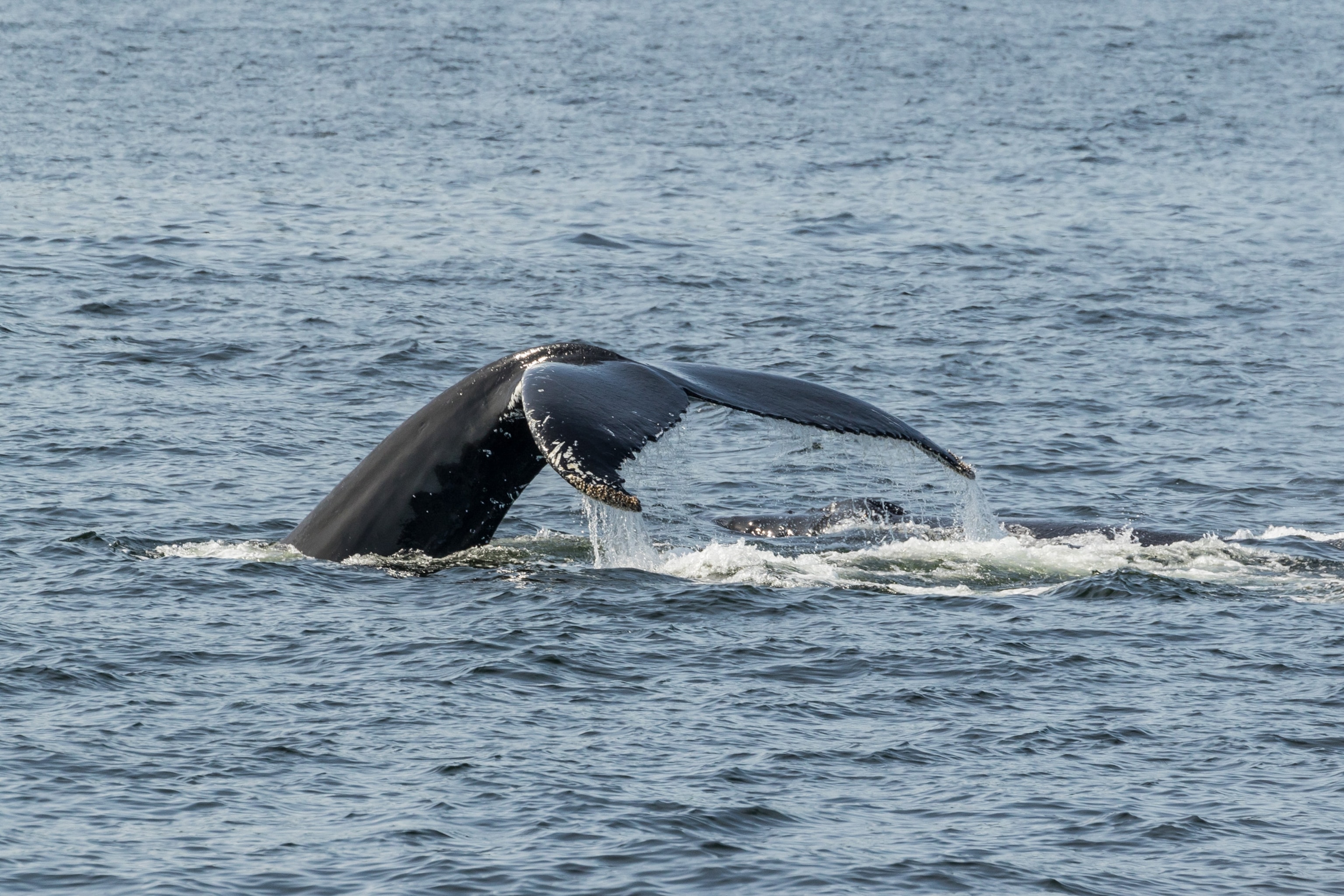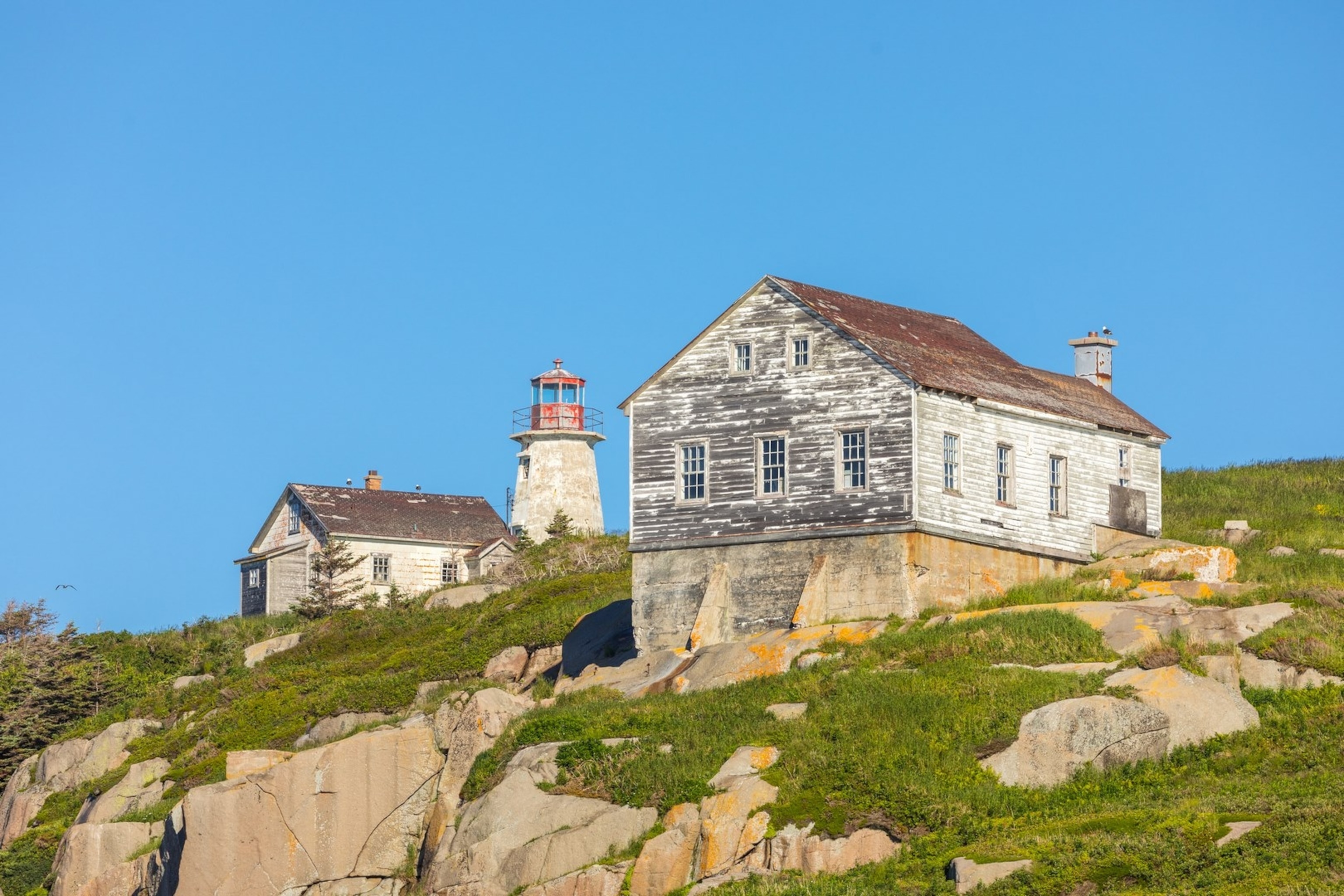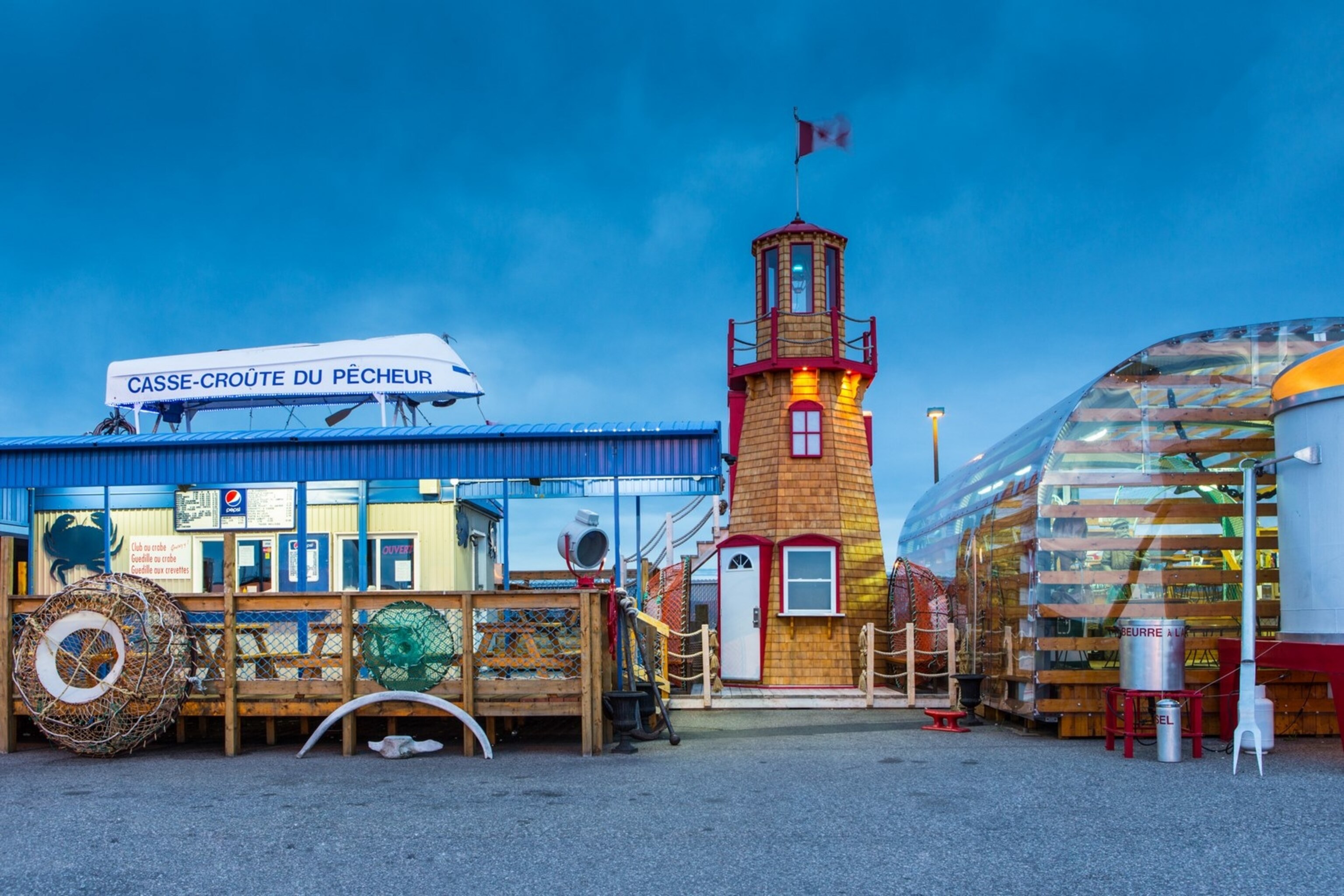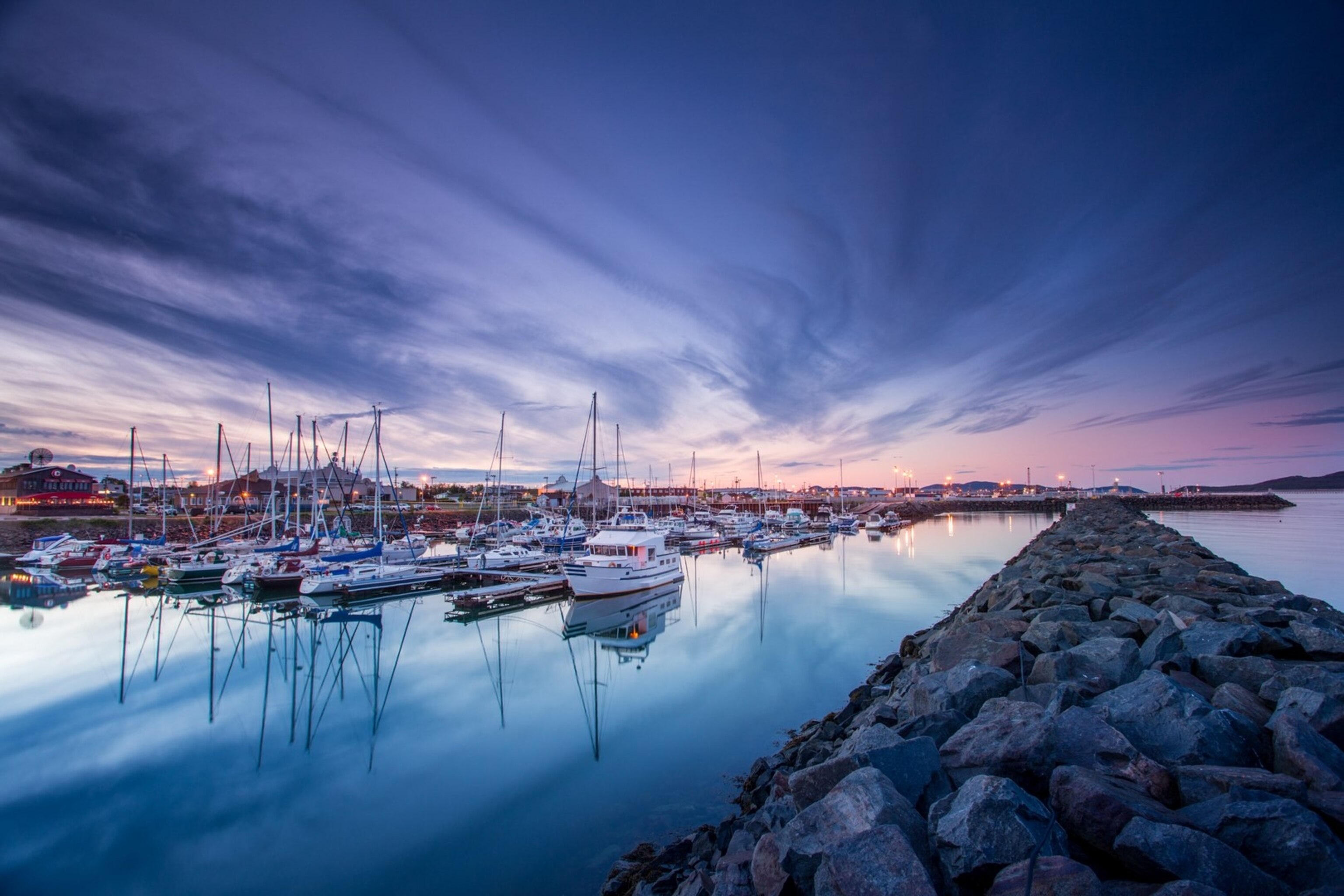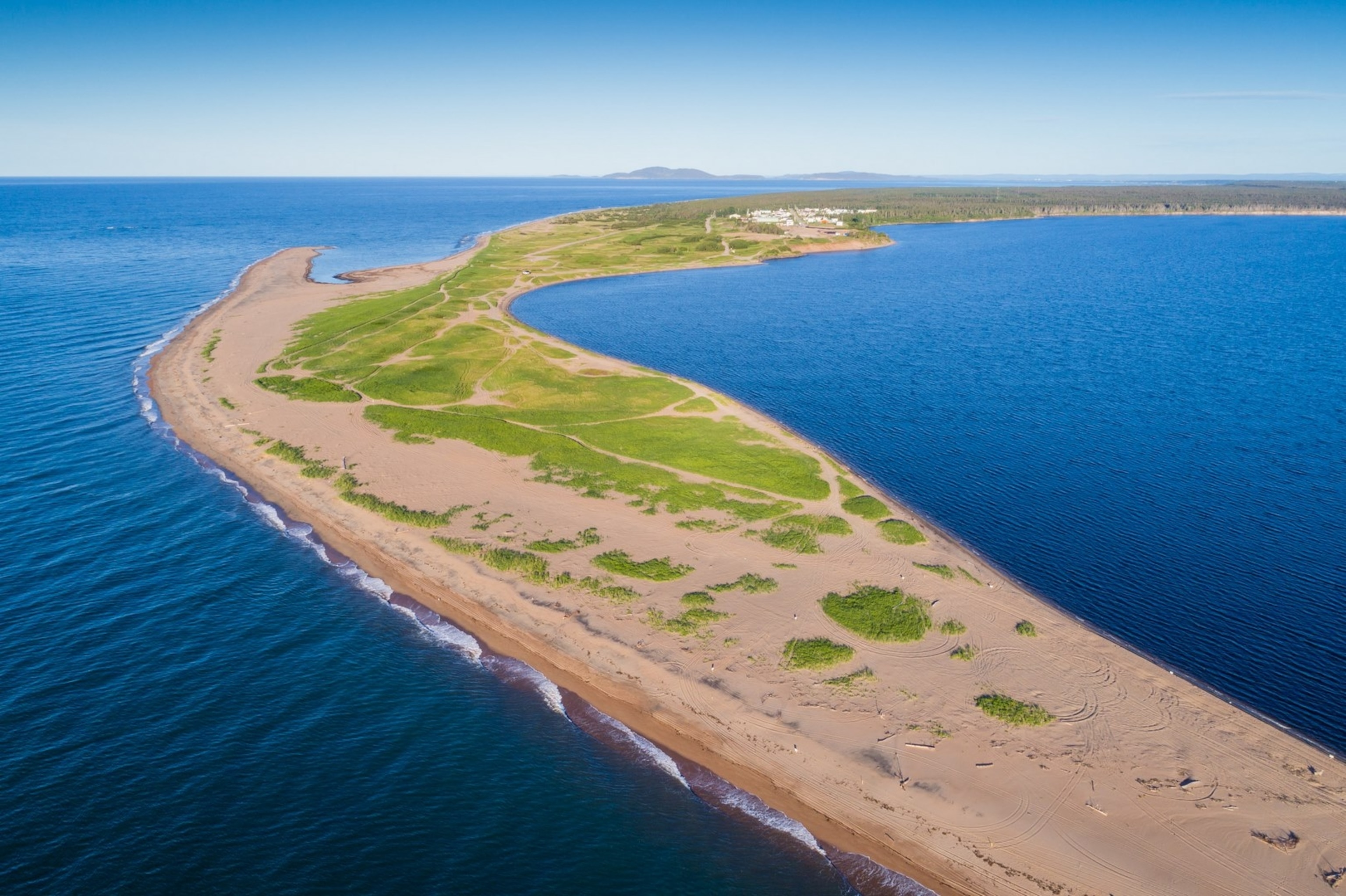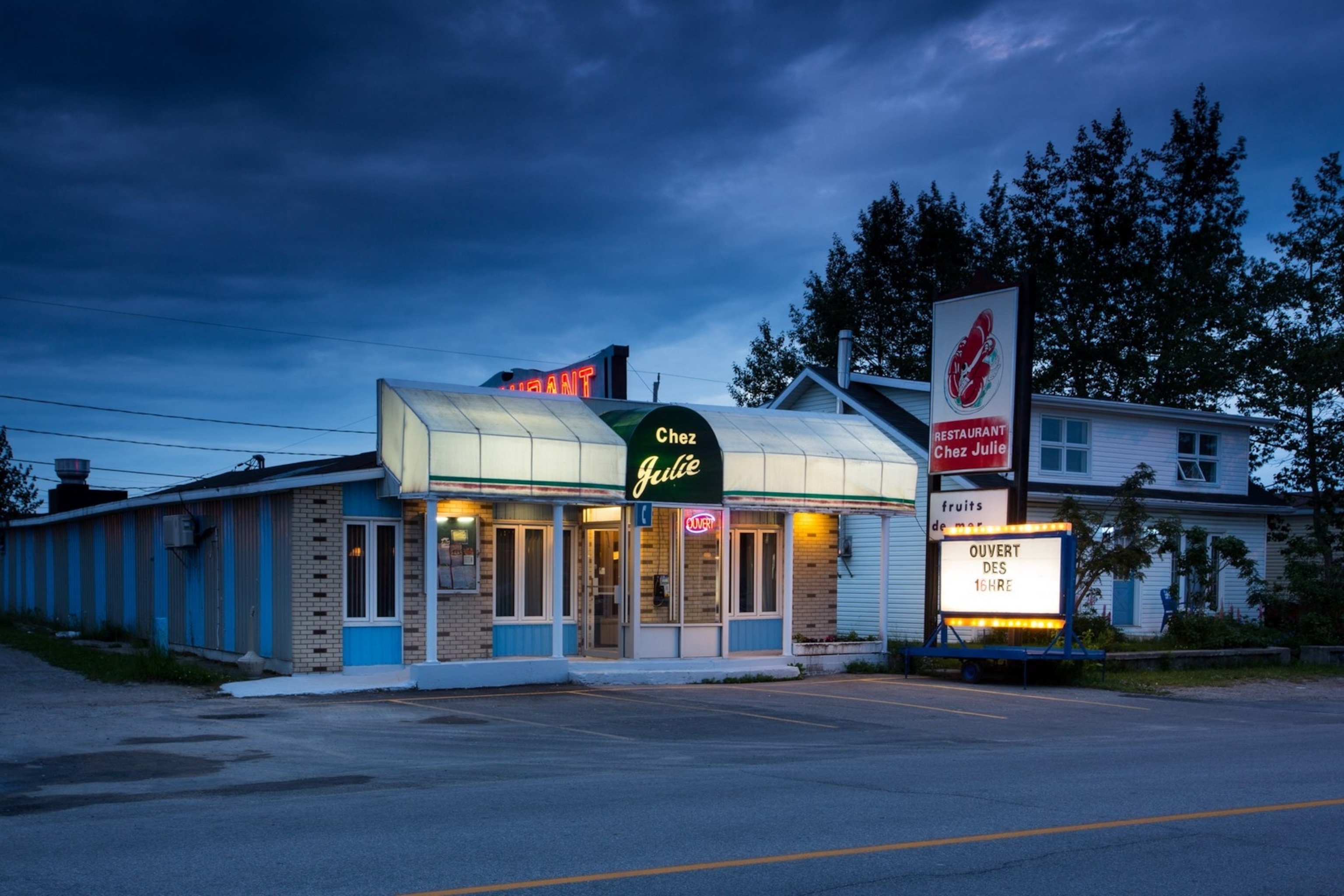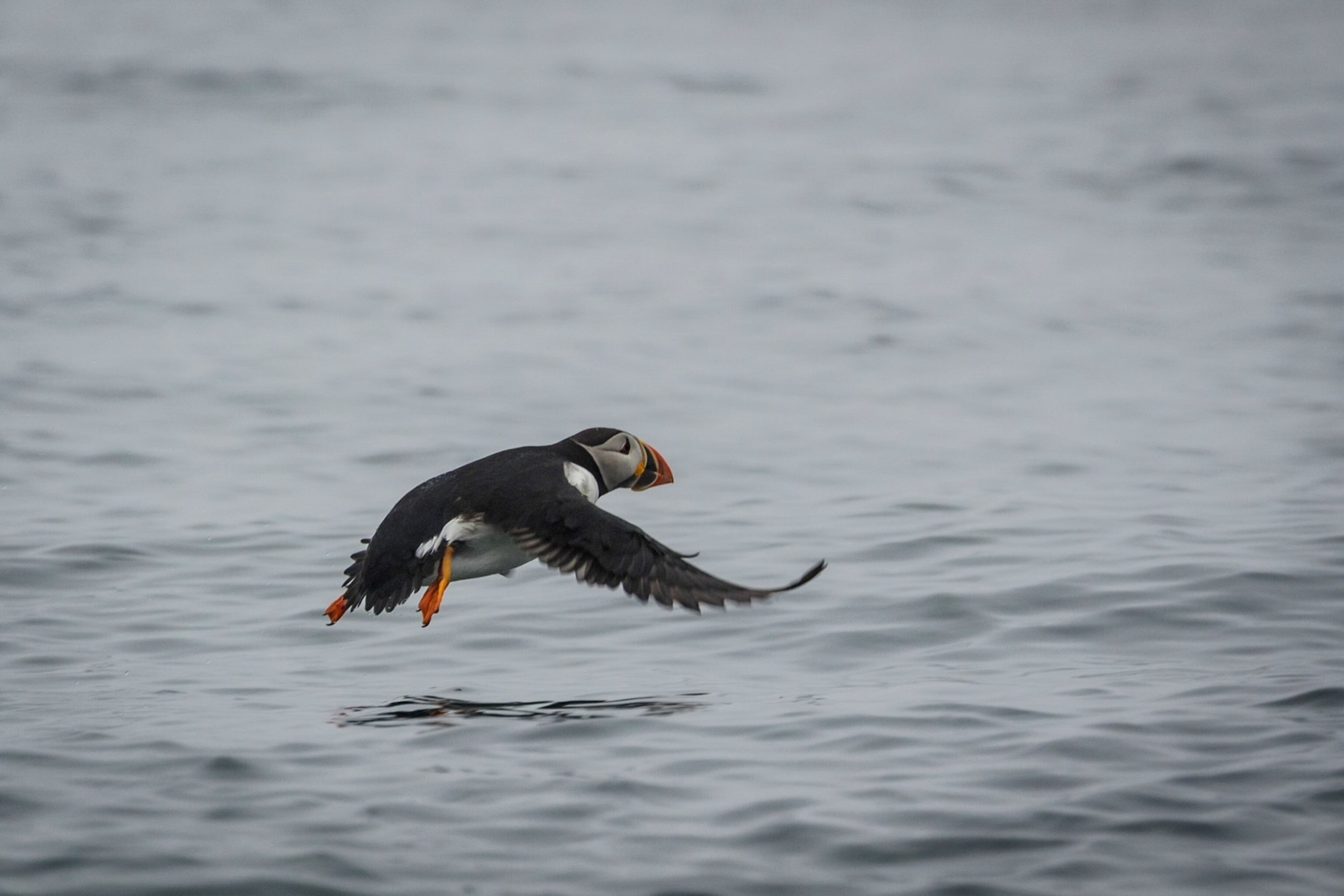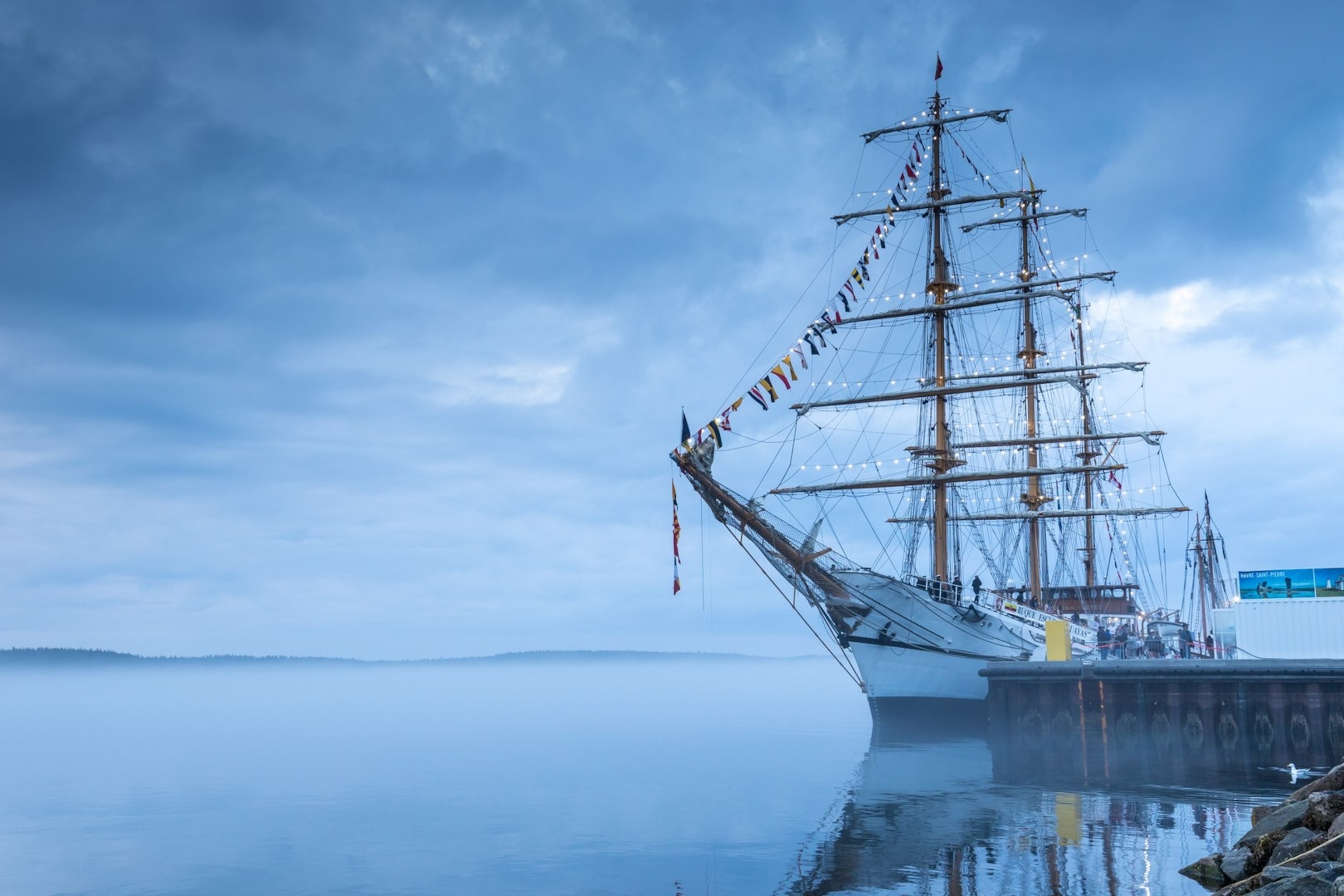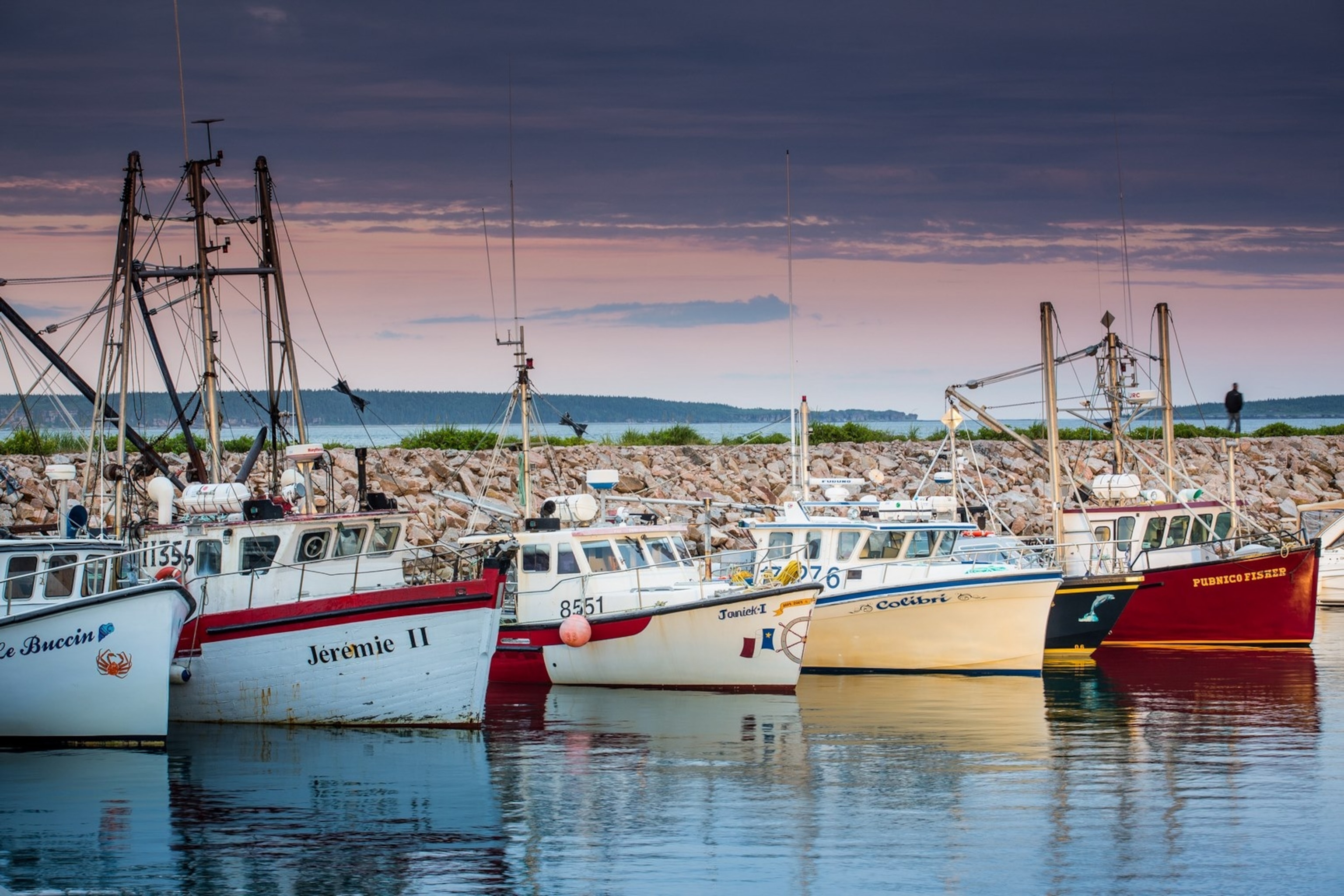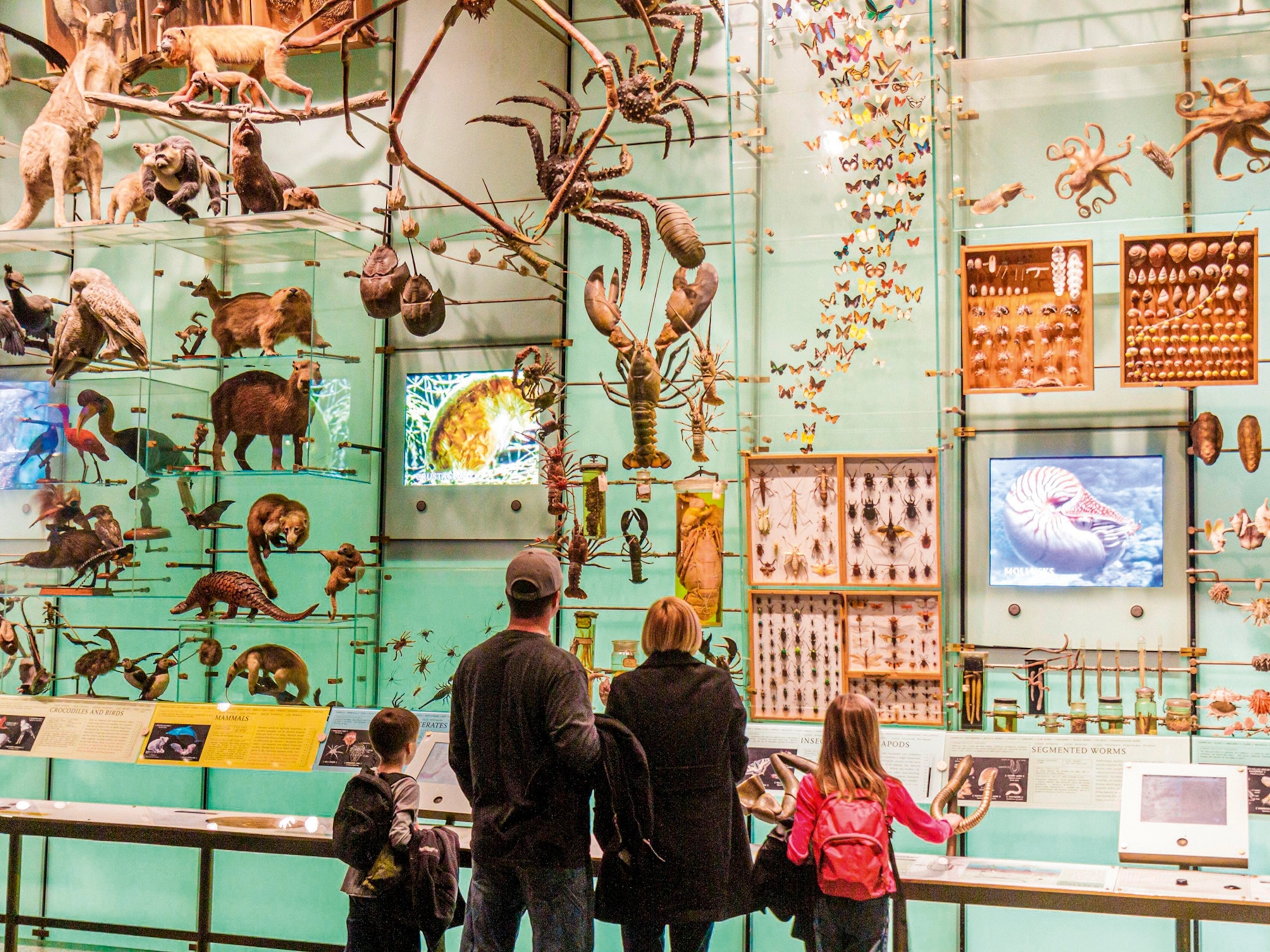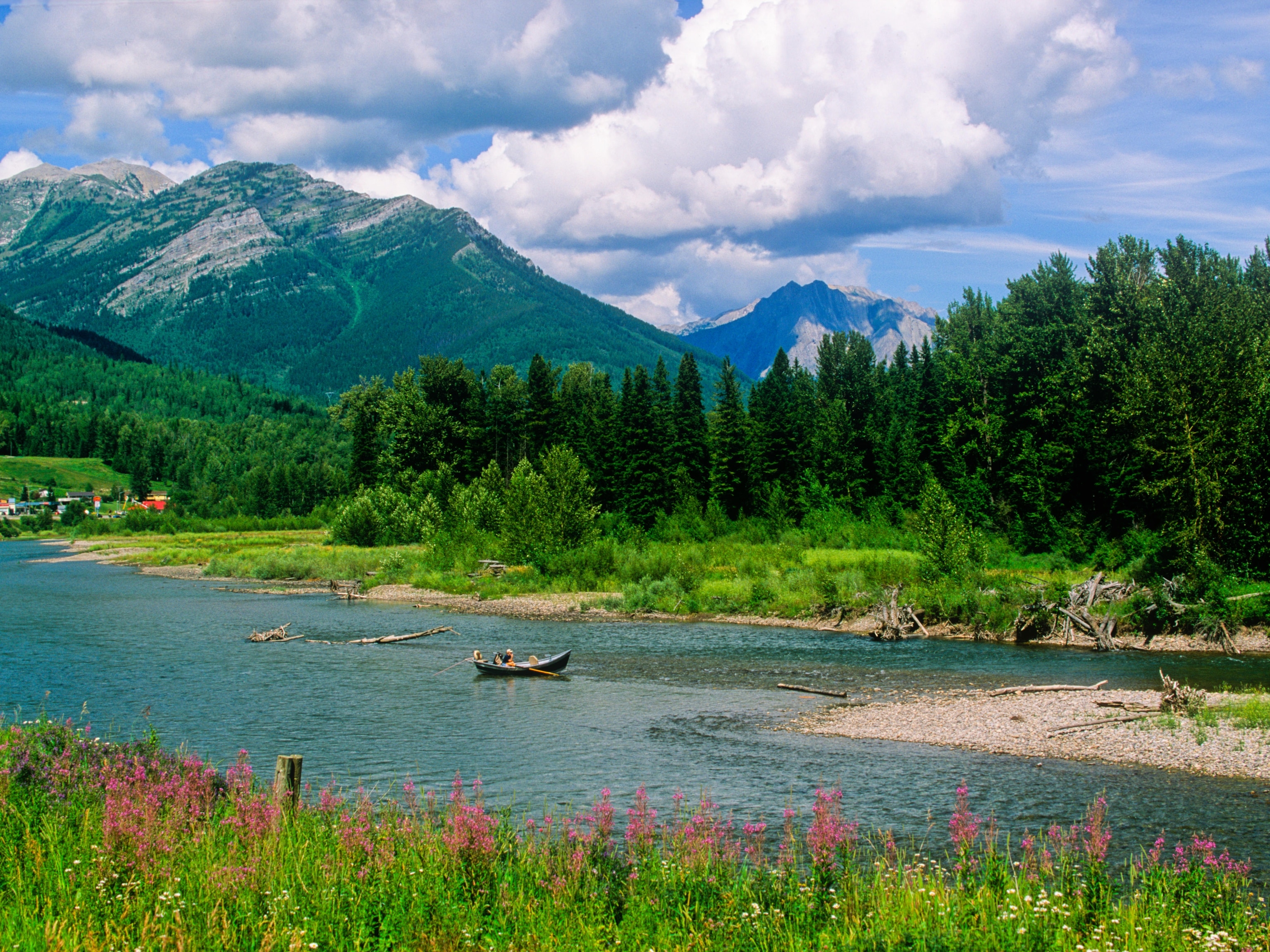Québec's ultimate road trip: into the wild on the Whale Route
Explore Québec's wild north shore on a winding drive along the St. Lawrence River and through First Nation coastal communities.
Discover rugged landscapes, Innu First Nation culture, and wild outdoor adventure with Nat Geo photographer and Québec native and expert Mathieu Dupuis on a 524-mile (one-way) drive along his home province’s remote North Shore (Côte-Nord). A favorite with long-distance road trippers, the tour follows Route 138—named the Whale Route since several different species can be spotted here—along the north shore of the St. Lawrence from Tadoussac to Kegaska. While this itinerary is five days, devoting at least a week to the trip will give you more time to explore—and less time on the road—each day.
TOP FIVE REASONS TO GO
- See several different species of whales from shore, by sea kayak, or on a zodiac cruise.
- Eat lobster, cod, and other wild-caught seafood from the St. Lawrence River and Gulf of St. Lawrence.
- Experience the dynamic culture of the Innu First Nation community.
- Explore Mingan Archipelago National Park Reserve with its rock formations dating back nearly 500 million years.
- Enjoy the solitude, slow pace, and pristine wilderness of a less-traveled coastal route.

DAY 1: TADOUSSAC, CAP-BON-DÉSIR, AND LES ESCOUMINS
See Whales Up-Close
Reaching the road trip’s starting point is part of the adventure. From Québec City, drive three hours northeast on Route 138 to catch the free Tadoussac–Baie-Sainte-Catherine Ferry. Watch for whales on the ten-minute ride across the stunning Saguenay fjord from Baie-Sainte-Catherine to Tadoussac. The charming village is the entry point to Côte-Nord and the hub for environmentally responsible Eco-Whale Alliance whale-watching boat and zodiac cruises. To capture water-level images of whales, take the exhilarating, two-hour Essipit zodiac tour. The personalized, small craft adventure excursion departs from Les Bergeronnes, about 15 miles northeast of Tadoussac. Following the tour, continue north another 10 miles on Route 138 to Les Escoumins for Atlantic halibut or another classic Gulf of St. Lawrence fresh-catch dinner at Pêcherie Manicouagan seafood market and restaurant.
INSIDE TIP: “Even in summer, dress for ‘winter’ when you go out on the St. Lawrence River,” says Dupuis. “It could be very chilly, even if it’s a heat wave on the shore. So, if everyone on the dock thinks you are overdressed, keep it that way. They will be jealous later.”
Spot whales from shore
If time doesn’t permit a two-hour whale-watching tour, there are still plenty of opportunities to view the magnificent marine mammals from land. Whether you get out on the water or not, stop on the way to Les Escoumins at the Cap de Bon-Désir Interpretation and Observation Centre. Open mid-June to early October, the Saguenay-St. Lawrence Marine Park center offers guided activities, coastal picnic spots, and rocky perches for wildlife viewing and photography. Whales, dolphins, and other creatures are regularly seen close to shore, but bring binoculars for the best views.
INSIDE TIP: “For photography, Dupuis suggests visiting Cap de Bon-Désir at sunrise or at sunset when the park is less crowded. “The light will be better, and the waters of the St. Lawrence should be calmer, if not glassy,” he adds. “Also, the wildlife is more active at those times of day.”


DAY 2: POINTE-AUX-OUTARDES AND BAIE-COMEAU
Explore Pointe-Aux-Outardes Nature Park
While the 104-mile drive from Cap de Bon-Désir north to coastal Pointe-Aux-Outardes Nature Park only takes a couple of hours, allow extra time for the St. Lawrence River views and occasional whale sightings. At the Nature Park, take a hike and climb the observation towers to experience the biodiversity—including a bog, boreal forest, red pines, sand dunes, beaches, more than 200 bird species and 300 plant species, and the North Shore’s largest salt marsh.
INSIDE TIP: June to September at the Nature Park, an Innu Nation elder named Wabush periodically shares Innu traditions, culture, and spirituality with visitors. Dupuis suggests timing your visit to coincide with one of Wabush’s regularly scheduled tours (offered in French and Innu only) or calling ahead to schedule an English-speaking tour (available to groups of eight or more).
Stay and play in a Unesco World biosphere reserve
Continue 23 miles to Baie-Comeau, gateway to adventure in the Manicouagan-Uapishka UNESCO World Biosphere Reserve. Covering 21,200 square miles, the naturally and culturally diverse site is one of the largest world biospheres on Earth. In charming downtown Baie-Comeau, brow boutiques and sample a local St-Pancrace craft brew. East of Baie-Comeau on Route 138, watch for the sign marking the road to Pointe-des-Monts, the second-oldest lighthouse on the St. Lawrence. Built in 1830, the 98-foot-tall lighthouse is open to visitors mid-June to Labor Day and offers 360-degree views of the St. Lawrence River, the Gulf of St. Lawrence, and passing boats and marine mammals.
INSIDE TIP: “Visiting the lighthouse at sunrise is a unique experience,” says Dupuis, who suggests booking a room at the adjacent lightkeeper’s house since Pointe-des-Monts is in a remote area. “If you are lucky, the breath of whales will rock you to sleep.”

DAY 3: SEPT-ILES
Choose your adventure
Get an early start to make the 97-mile drive to Sept-Iles in time for a full day of exploring. Strategically situated at the mouth of the Gulf of St. Lawrence, Sept-Îles is a deep-water port and popular cruise ship stopover steeped in Innu heritage. The city also serves as the access point for water, forest, and beach activities in the seven-island Sept-Iles Archipelago. Go kayaking, stand-up paddle boarding, and hiking at the Lac des Rapides Outdoor Centre. Learn about past and present Innu culture at the Shaputuan Museum.
INSIDE TIP: “Sept-Iles is also a big fishing harbor,” says Dupuis. “On the fishing wharf, you can eat inside a giant lobster trap at Le Casse-Croute du pêcheur lobster shack.”


Explore Grand Blasque Island
Mid-June to early September, zodiacs regularly ferry passengers from the Sept-Iles marina to nearby Grand Basque Island, the only island in the archipelago offering wilderness campsites and hiking trails. Whether you plan to spend a few hours, a full day, or are camping overnight on Grand Basque, hike the trail to the top of the hill for 360-degree views of Sept-Iles Bay. In addition to a basic shuttle, there are wider archipelago cruises, such as birdwatching tours of the Corossol Island Migratory Bird Sanctuary, considered one of eastern Canada’s most important protected areas for marine birds.
INSIDE TIP: “Take a boat tour to the very end the bay to see Corossol Island,” says Dupuis. “In addition to being a bird sanctuary the island has an abandoned lighthouse standing on the top of a cliff.”
DAY 4: LONGUE-POINTE-DE-MINGAN AND HAVRE SAINT-PIERRE
Cruise the Mingan Archipelago National Park Reserve
Today’s drive primarily hugs the coast for 136 scenic miles, passing such villages as Rivières-Aux-Tonnerres, Magpie, Longue-Pointe-de-Mingan, and Mingan, and the Innu community of Maliotenam. Each August, Maliotenam hosts the Innu Nikamu (“The Singing Man”) Festival, featuring live music and other performing arts, as well as Innu cultural presentations. In Longue-Pointe-de-Mingan, take a boat tour (May to September) in the Mingan Archipelago National Park Reserve with Loiselle Family Cruises. Look for puffins, whales, seals, and eerie limestone formations from the water and on stopovers on Perroquet Island and Nue de Mingan Island.
INSIDE TIP: “Good or bad weather, visit Nue Island and Perroquet Island,” says Dupuis. “Foggy days are my favorite, because the fog layer makes the rock monoliths of Mingan look especially mysterious.”
Hike and camp on an Island
From Longue-Pointe-de-Mingan, continue east 29 miles to Havre Saint-Pierre, entry point to the most-visited section of the Mingan Archipelago. From Havre Saint-Pierre, you can catch a boat out to popular islands, such as Niapiskau and Quarry. Spend a few hours picnicking and hiking among the island’s soaring limestone monoliths. Extend your stay by tent camping on Niapiskau Island or bunking in a ready-to-camp oTENTik on Quarry Island. If you’re returning to Havre Saint-Pierre for the evening, make dinner reservations at Chez Julie, a long-time local favorite for fresh lobster, cod, and other North Shore seafood specialties.
INSIDE TIP: “The drive from Havre Saint-Pierre to Kegaska is the most remote part of the route—but, it is a pure wonder,” says Dupuis. “Before leaving Havre Saint-Pierre, be sure to fill the gas tank, stock up on provisions, and plan your accommodation in advance.”
DAY 5: NATASHQUAN AND KEGASKA
Seabirds, songs, and sea-faring history
The final 125-mile stretch of the trip is separated into two distinct sections: 93 paved miles to the village of Natashquan and 32 mainly gravel miles to the remote fishing community of Kegaska. On the way to Natashquan, stop at the halfway point to stroll the rocky shoreline and look for nesting seabirds in the small (population 84) fishing village of Baie-Johan-Beetz. Continue to Natashquan, birthplace of French-speaking poet, singer, and Quebecois folk hero Gilles Vigneault. Experience Natashquan’s artistic side at cozy Café-Bistro L’échourie, which regularly hosts evening storytelling and live music performances.
INSIDE TIP: “For photography and to learn about Natashquan’s cod fishing heritage, Dupuis suggests visiting the ‘Les Galets’ Québec heritage site, a rocky crag dotted with a dozen weathered fish drying-and-salting sheds dating back 150 years.”

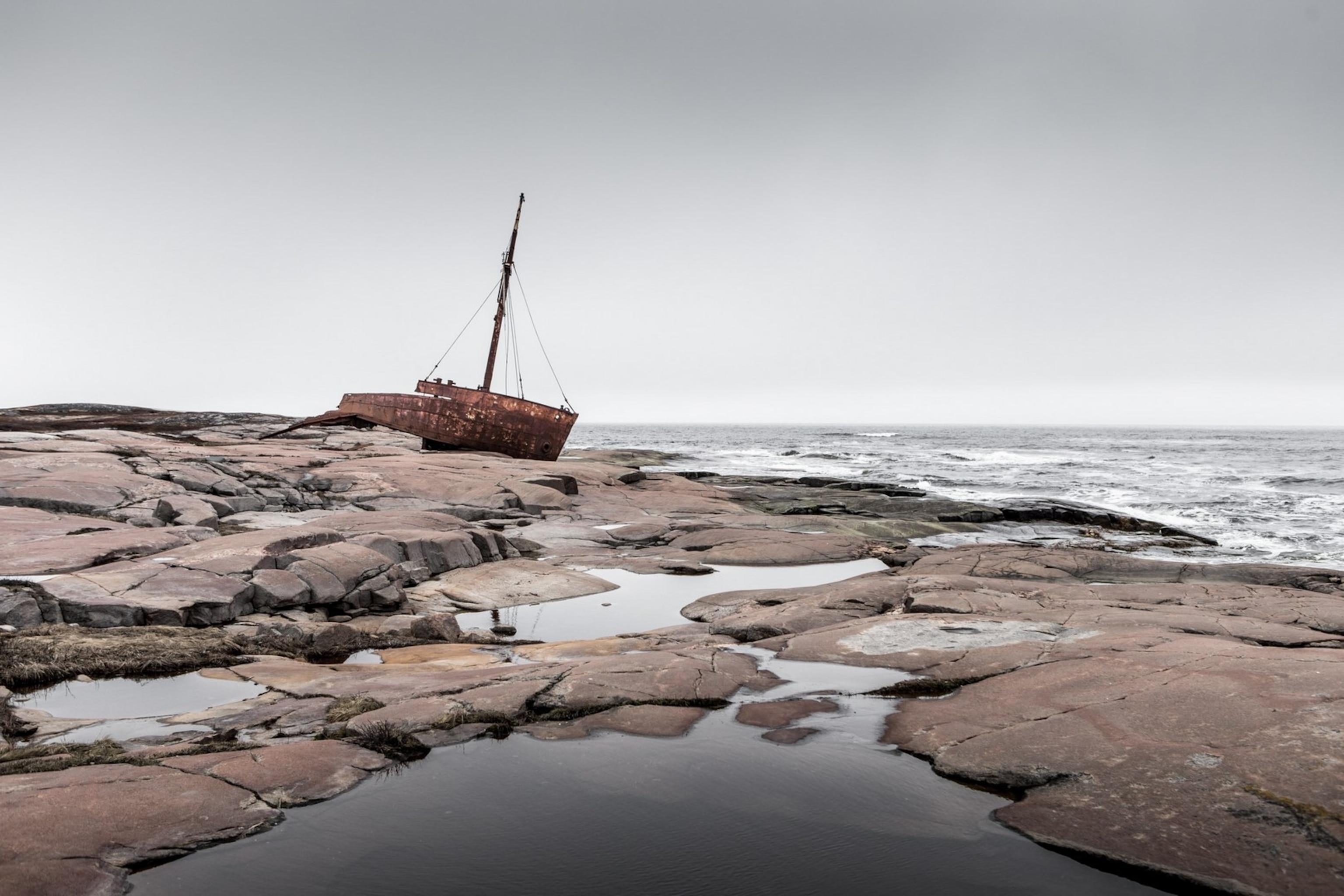
Reach the end of the road
The pavement ends about five miles east of Natashquan in Pointe-Parent. From here, follow the graded, gravel length of Route 138 to the Instagram-famous “FIN 138” sign marking the end of the road in Kegaska, easternmost village on the North Shore. Snap the requisite selfie in front of the sign and then turn the car around. Before driving back to Natashquan for the night, stop in Kegaska to stroll the beach and hike the crushed-shell trails. Wind your way to the rusty remains of the cargo ship Brion, which wrecked on a reef here in 1976.
HOW TO TAKE THIS TRIP

Fly to Québec City and rent a car at the airport. Follow Route 138 (QC-138 E) 143 miles to the ferry landing in Baie-Saint-Catherine. Drive onto the ferry for the ten-minute crossing to Tadoussac. Continue on Route 138 for 524 miles to the end of the road in Kegaska. Retrace your route back to the airport, stopping over one or two nights to break up the long drive. Plan to spend at least a week (five days up and two days back) making the trip. If time isn’t an issue, consider taking a scenic, 135-mile (one-way) detour through the backcountry wilderness on DAY 2. To make the side trip, head north from Baie-Comeau on Route 389 (QC-389). Popular with motorcyclists, the winding and hilly drive leads north past lakes and rivers to the world’s largest multiple-arch-and-buttress dam, Manic-5, in Rivière-aux-Outardes. After viewing the dam, retrace your route back to Route 138 in Baie-Comeau to resume the road trip.
WHERE TO STAY
Spend the first night in a fully-equipped cottage overlooking the St. Lawrence L at Les Chalets au Bord de la Mer in Les Escoumins. In Baie-Comeau, choose the historic Hotel le Manoir for the river views or the renovated Le Grand Hotel for the convenient downtown location. Close out day three by tent camping on Grand Basque Island or watching the boats in the Sept-Îles marina at the Chateau Arnaud hotel. In Havre Saint-Pierre, stay onshore at the homey Auberge Boreale or go island camping in Mingan Archipelago National Park Reserve. After visiting Kegaska, head back to a bed and breakfast in Natashquan for the night.
TRAVEL TIP: Lodging, food, and fuel options are limited along the route. Book rooms and campsites well in advance, bring snacks and drinks, and fill the gas tank every chance you get. June to mid-September is the best time to make the trip, since many places are closed in the offseason. Find inspiration and itineraries to explore even more of Québec in Dupuis’ travel book, Québec: A Photographic Road Trip Through Canada’s Beautiful Province (National Geographic, 2018).


